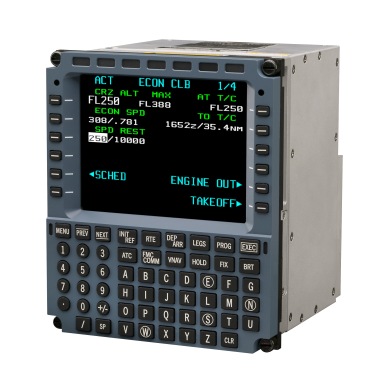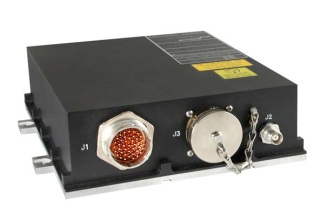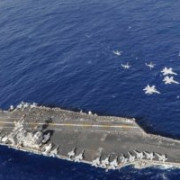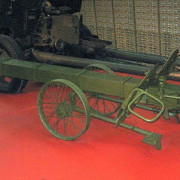Alenia c-27 spartan
Содержание:
- Ремоторизация G.222
- CMA-9000 Flight Management System
- Specifications (C-27J)[]
- US Army / US Air Force C-27J joint cargo aircraft (JCA)
- TacView® Portable Mission Display
- IntegriFlight™ CMA-5024 GPS Landing System Sensor
- Specifiche (C-27J)
- Ontwerp en ontwikkeling
- AN/APN-241 Digital Mapping Radar
- NATO-standard 463L pallets
- Image: brinkley.ccC-27J – Image: stripes.comA C-27J Spartan practices airdropping bundles during flight testing of the plane at Yuma Proving Grounds, Ariz., in early 2009. In April, through Resource Management Decision 802, Defense Secretary Robert Gates moved the C-27J program and its related direct support mission from the Army to the Air Force. (U.S. Air Force Photo) – Image: amc.af.mil
- Image: redstar.gr
- SAR (Search And Rescue) configuration pitched to Canada
- Avionics
- Пользователи
- Specificaties (C-27J)
- Design and development[]
Ремоторизация G.222
В 1997 году Alenia и Lockheed Martin сформировали Lockheed Martin Alenia Tactical Transport Systems (LMATTS) для разработки новой версии Aeritalia G.222 с авионикой и двигателем, идентичной C-130J Hercules , поэтому оснащенной турбовинтовым двигателем Rolls-Royce AE. двигатели.2100 . Модернизированный таким образом самолет имеет на 35% большую дальность действия и на 30% больший потолок по сравнению с предыдущими версиями. Его внутренние размеры и степень устойчивости к полу позволяют перевозить бронетранспортеры типа M113 или вертолет размером с Bell OH-58 Kiowa .
Обозначение этого самолета не является официальным обозначением ВВС США , которым партнеры Alenia надеются продать этот самолет, но напоминает об использовании ВВС США G.222 , где буква J обозначает совместное предприятие . В25 сентября 1999 г.Состоялся первый полет модифицированного G.222 , первого C-27J, первоначально построенного на самолете12 мая 2000 г.. Заказчики запуска Италия и Греция , которые купили по 12 экземпляров каждый еще в 2000 году.
Конкурент CASA CN-235 / C-295 и Антонов Ан-32 , C-27J был оценен вооруженными силами Саудовской Аравии , Египта , Израиля , Финляндии , Малайзии , Мексики , Польши (кто предпочел C-295 ) , Португалия (кто предпочел C-295 вФевраль 2006 г.) и Швейцарии среди других. Следующие страны заказали или могут заказать C-27J.
CMA-9000 Flight Management System

CMA-9000 FMS
- The CMA-9000 is a compact flight management system well suited for modern digital cockpits in fixed and rotary wing aircraft. It is intended for civil and military transport as well as helicopter FMS applications. It is the next generation FMS derived from the successful CMA-900 FMS/GPS and the CMA-3000 helicopter FMS. The CMA-9000 conforms to the ARINC-739 MCDU standard making suitable as display and control unit for other systems such as ACARS, ACMS, SATCOM. Moreover, it has the capability to act as Radio Management Unit.Full fledged Flight Management function in a single cockpit unit with civil certified multi-sensor (GPS, INS, DME, EGI, Doppler) navigation capabilities.
- Optional FMS-resident AOC (ARINC 702A FMS-loadable messages) and ATS (ADS and CPDLC) datalink applications.
- Optional comprehensive Radio Management functions in a single cockpit unit.
- Optional helicopter specific tactical features including bi-directional DMAP interface.
Key Features
-
- Sunlight readable color AMLCD
- ARINC 424 legs with SIDS, STARS and GPS Approaches
- RNP-1 (TGL-10 PRNAV) compliant with growth to RNP-RNAV
- Barometric VNAV Approach
- Optional vertical navigation for all phases of flight with limited performance trajectory prediction
- ARINC-739 MCDU for ACARS, SATCOM and ACMS
- Triple synchronized operation
- FANS-1/A compatible datalink option (AOC, ADS and CPDLC)
- Comprehensive I/O for retrofit and new build installation
- Interfaces to navigation radios and sensors, communications radios, digital moving map displays and other equipment
Source esterline.com

Specifications (C-27J)[]
Data from Alenia Aeronautica, C-27J facts
General characteristics
- Crew: Minimum two: pilot, co-pilot, (plus loadmaster when needed)
- Capacity: 60 troops or 46 paratroops or 36 litters with 6 medical personnel
- Payload: 11,500 kg (25,353 lb)
- Length: 22.7 m (74 ft 6 in)
- Wingspan: 28.7 m (94 ft 2 in)
- Height: 9.64 m (31 ft 8 in)
- Wing area: 82 m2 (880 sq ft)
- Empty weight: 17,000 kg (37,479 lb)
- Max takeoff weight: 30,500 kg (67,241 lb)
- Powerplant: 2 × Rolls-Royce AE2100-D2A turboprop, 3,460 kW (4,640 hp) each
- Propellers: 6-bladed Dowty Propeller 391/6-132-F/10, 4.15 m (13 ft 7 in) diameter
Performance
- Maximum speed: 602 km/h (374 mph; 325 kn)
- Cruising speed: 583 km/h (362 mph; 315 kn)
- Minimum control speed: 194 km/h; 121 mph (105 kn)
- Range: 1,852 km (1,151 mi; 1,000 nmi) with 10,000 kilograms (22,000 lb) payload
- Range at 6,000 kg payload: 4,260 km (2,650 mi; 2,300 nmi)
- Ferry range: 5,926 km (3,682 mi; 3,200 nmi)
- Service ceiling: 9,144 m (30,000 ft)
US Army / US Air Force C-27J joint cargo aircraft (JCA)
In June 2007, the C-27J was chosen as the US Army / Air Force new joint cargo aircraft (JCA). The initial contract is for 78 aircraft (54 for the army and 24 for the USAF). L-3 Communications Integrated is prime contractor and is teamed with Alenia North America, Boeing Integrated Defense Systems and Global Military Aircraft Systems (a joint venture of L-3 and Alenia). The C-27J JCA’s maiden flight was in June 2008 and the first aircraft was delivered to the US Army and Air Force in September 2008. The first JCA training class began in November 2008.
Finmeccanica received a $319m contract from the USAF in June 2010 to supply eight C-27J JCA for delivery in 2012.
The US Special Operations Command will receive seven C-27Js from the USAF, as part of intra-service transfer. All the aircraft are expected to be transferred by April 2014 and will be operated by the US Army Special Operations Command. The USAF will also transfer 14 C-27Js to the US Coast Guard.
TacView® Portable Mission Display

The TacView Portable Mission Display (PMD) is a compact, self-contained mission computer designed specifically to enhance situational awareness for military, paramilitary, law enforcement, and civil aircrews. TacView provides mission enhancing functionality at the flight crew’s fingertips, with a data interface no other airborne portable computer can provide.
Rugged Design
High vibration and temperature extremes associated with demanding airborne operations will not affect TacView’s performance, nor will they cause untimely system shut-downs. A removable minimum 64GB solid state memory ensures continuous operation in the most challenging cockpit conditions, and allows for instantaneous declassification of critical data when necessary.

Brilliant Display
TacView’s unique high contrast display offers an exceptional viewing experience in both day and night lighting conditions, and is fully dimmable from 800 to 0.5 Nits. The unit is also NVIS compatible to MIL-STD-3009, including keyboard and bezel buttons.
Accommodating User Interface
Rugged film-on-glass touch technology puts TacView ahead of the competition, offering reliable single or dual touch input capability, while its multi-function bezel buttons are designed to accommodate gloved-hand tactile feedback. In addition, a uniquely integrated “QWERTY-style” sliding keyboard optimizes text input in all conditions.
Power to Spare
Never again does the aircrew need to limit the amount of data displayed on a PMD at the same time. TacView comes equipped with a powerful Intel Core i7 processor with integrated video processing capability, which allows multiple applications to run simultaneously.
Source esterline.com
IntegriFlight™ CMA-5024 GPS Landing System Sensor

CMC’s IntegriFlight CMA-5024 GPS Landing System Sensor meets the requirements for an Instrument Flight Rules, civil certified Global Navigation Satellite System (GNSS). The CMA-5024 provides Wide Area Augmentation System (WAAS) Satellite Based Augmentation System (SBAS) GPS capability from departure to approach that complies with published Communication Navigation Surveillance/Air Traffic Management (CNS/ATM) navigational mandates. WAAS/SBAS augments GPS to provide an extremely accurate navigation solution that will support all flight operations from en route to GNSS and WAAS/SBAS Localizer Performance with a Vertical Guidance (LPV) CAT-1 equivalent approach. The CMA-5024 is provisioned for growth to GBAS with a built-in VHF Data Broadcast (VDB) receiver. Source esterline.com
Specifiche (C-27J)
Disegni al tratto
C-27J in mostra al Paris Air Show . E’ visibile la condensa dei vortici prop .
All’interno della cabina del C-27J
Dati da Alenia Aermacchi, C-27J fatti Leonardo Brochure C-27J
Caratteristiche generali
- Equipaggio: minimo due: pilota, copilota (più loadmaster quando necessario)
- Capacità: 60 truppe o 46 paracadutisti o 36 cucciolate con 6 personale medico (11.600 kg di carico utile massimo) 6 VIP più 18 passeggeri di scorta più un modulo di servizio.; Trasporto merci (carichi alla rinfusa, veicoli gommati e cingolati, motori di aerei, elicotteri leggeri, 463L pallet standard – 3 HCU-6E+ 1 HCU-12E o 6 HCU-12E); Airdrop (fino a 9.000 kg con due piattaforme; fino a 6 pacchi A22 CDS; fino a 5.000 kg con 1 o 2 piattaforme di LAPES; fino a 6.000 kg con scarico da combattimento – 3 pallet HCU-6E); Antincendio (fino a 6 contenitori del sistema «Guardian» — 6.000 L di acqua/ignifugo; sistema di attacco antincendio roll-off/roll-on con capacità di 9.850 L)
- Vano di carico: larghezza 3,33 m X altezza 2,25 m
- Lunghezza: 22,7 m (74 piedi e 6 pollici)
- Apertura alare: 28,7 m (94 piedi e 2 pollici)
- Altezza: 9,64 m (31 piedi e 8 pollici)
- Area alare: 82 m 2 (880 piedi quadrati)
- Peso a vuoto: 17.500 kg (38.581 libbre)
- Peso massimo al decollo: 31.800 kg (70.107 libbre)
- Carico utile massimo: 11.600 chilogrammi (25.600 libbre) a MTOW
- Propulsore: 2 × Rolls-Royce AE2100-D2A turboelica, 3.458 kW (4.637 CV) ciascuno
- Eliche: Dowty Propeller a 6 pale 391/6-132-F/10, diametro 4,15 m (13 ft 7 in)
Prestazione
- Velocità massima: 602 km/h (374 mph, 325 kn)
- Velocità di crociera: 583 km/h (362 mph, 315 kn)
- 194 km/h (121 mph, 105 kn)
- Autonomia: 1.759 km (1.093 mi, 950 nmi) con MTOW di 31.800 kg (70.100 lb )
- Portata a 4.536 kg (10.000 lb) di carico utile : 5.112 km (2.760 nmi )
- Autonomia del traghetto: 5.852 km (3.636 mi, 3.160 nmi)
- Soffitto di servizio: 9.144 m (30.000 piedi)
Ontwerp en ontwikkeling
In 1995 begonnen Alenia en Lockheed Martin besprekingen om Alenia’s G.222 te verbeteren met behulp van de glazen cockpit van de C-130J en een krachtigere versie van de G.222’s T64G- motor en driebladige propellers. In 1996 begon een programma op een verbeterde G.222, genaamd C-27J; het gebruikte een Amerikaanse militaire typeaanduiding op basis van de C-27A-aanduiding van de G.222. In 1997 richtten Alenia en Lockheed Martin Lockheed Martin Alenia Tactical Transport Systems (LMATTS) op om de C-27J te ontwikkelen. Het ontwerp veranderde om de C-130J Super Hercules’s Rolls-Royce AE 2100- motor en zesbladige propeller te gebruiken. Andere veranderingen zijn onder meer een volledig digitale MIL-STD-1553-systemen en avionica-architectuur, en een bijgewerkte laadruimte voor meer gemeenschappelijkheid. De C-27J heeft een 35% groter bereik en een 15% hogere kruissnelheid dan de G.222.
Een C-27J Spartan aan de lopende band in Italië
In 2005 had het Amerikaanse leger de noodzaak vastgesteld om zijn verouderde Short C-23 Sherpa- lifter te vervangen. In plaats van voldoende luchtbrugbeschikbaarheid met vaste vleugels, werd er hard gewerkt aan de «laatste tactische mijl» van de CH-47-helikoptervloot om naar voren geplaatste troepen te leveren; dus zocht het Amerikaanse leger de C-27J voor zijn directe ondersteuningscapaciteiten en om de vraag naar de CH-47-vloot te verminderen. In 2006 werd LMATTS ontbonden toen Lockheed Martin de C-130J in 2006 aanbood als mededinger in dezelfde competitie van het Amerikaanse leger en de Amerikaanse luchtmacht Joint Cargo Aircraft (JCA) waarin de C-27J meedeed. Alenia Aeronautica ging vervolgens samen met L-3 Communications en vormde de Global Military Aircraft Systems (GMAS) joint venture om de C-27J op de markt te brengen; Boeing trad ook toe tot GMAS.
GMAS bood de C-27J in de JCA-competitie tegen Raytheon en EADS North America’s C-295 om de bestaande Short C-23 Sherpa, Beechcraft C-12 Huron en Fairchild C-26 Metroliners in de Army National Guard te vervangen , en als vervanging voor tactische airlifter voor Air National Guard- groepen of vleugels die C-130’s verliezen door pensionering of herschikking en sluiting van de basis . In november 2006 voltooide de C-27J de Early User Survey-evaluaties van het Amerikaanse ministerie van Defensie , na in totaal 26 uur te hebben gevlogen en alle vereisten te overtreffen. GMAS kondigde ook aan dat de C-27J zal worden geassembleerd in een fabriek in Cecil Field , Duval County, Florida . De definitieve selectie van de JCA werd verwacht in maart 2007, maar werd uitgesteld tot 13 juni 2007, toen het Pentagon de toekenning aankondigde van een contract van US $ 2,04 miljard voor 78 C-27J’s, inclusief training en ondersteuning, aan GMAS.
RAAF C-27J Spartaans cockpitaanzicht
Op 22 juni 2007 protesteerde Raytheon formeel tegen de gunning van het JCA-contract voor de C-27J. Op 27 september 2007 kondigde de GAO aan dat het het protest van Raytheon had afgewezen, waardoor het Pentagon kon doorgaan met de aanbesteding; op dit moment had het Amerikaanse leger behoefte aan maximaal 75 vliegtuigen in de Army National Guard; de luchtmacht had een vereiste voor maximaal 70 vliegtuigen in het Air Force Special Operations Command en de Air National Guard. De eerste C-27J zou in juni 2008 worden geleverd aan het gezamenlijke test- en trainingsprogramma van het Amerikaanse leger en de luchtmacht. De eerste vlucht van een Amerikaanse C-27J vond plaats op 17 juni 2008.
Vanaf 2020 staan de bestellingen in Australië (10), Bulgarije (3), Tsjaad (2), Griekenland (8), Italië (12), Kenia (3), Litouwen (3), Mexico (4), Marokko (4 ), Peru (4), Roemenië (7), Slowakije (2), Zambia (2), Verenigde Staten (21) en een niet nader genoemd land (2).
In november 2020 lanceerde Leonardo het C-27J Next Generation-programma met nieuwe apparatuur, systemen en aerodynamische oplossingen om de operationele efficiëntie en de prestaties te verbeteren. De nieuwe generatie beschikt over uitgebreide nieuwe avionica om te voldoen aan de internationale prestatiegebaseerde navigatiestandaard om zonder beperkingen in het civiele luchtruim te opereren en om de interoperabiliteit in tactische scenario’s te verbeteren. Terwijl de nieuwe winglets bijdragen aan het verbeteren van de klimprestaties en het verhogen van de MTOW met maximaal 1.000 kg.
AN/APN-241 Digital Mapping Radar

The only radar in the transport class with a high resolution SAR mapping mode
The AN/APN-241’s capability remains unmatched by the competition as the only radar in the transport class with a high resolution SAR mapping mode. In addition to meeting needs for precision navigation, this unparalleled mapping capability enables operators to execute landing missions with confidence on unimproved runways without aid from ground-based landing systems.
No other radar in the industry can compete with the range and accuracy of the AN/APN-241. It is the only radar with a 10nm range Windshear mode and its unique two-bar can technology eliminates false alarms. And, unlike other systems, the AN/APN-241 windshear mode is not restricted by altitude. At 20 nautical miles, the AN/APN-241 provides the longest range air-to-air situational awareness mode of any transport radar. The Skin Paint mode also features computer generated target-sizing, a clutter-free display, and hands-free operation to the crew.

Simultaneous multifunction capability
The AN/APN-241 is designed to allow pilots to focus on the mission rather than “working” the radar. Automatic tilt and gain adjustments reduce operator tasking, and with simultaneous mode interleaving, crews can select independent radar modes according to mission requirements. The AN/APN-241 provides overlays of flight plan or TCAS information on weather or ground maps for greater situational awareness. Operators may also ‘freeze’ the AN/APN-241 into a non-emitting mode to gain a tactical advantage.
The AN/APN-241 was built with growth in mind. Modifications to current modes and technologies will provide a maritime patrol capability suitable for fisheries protection, smuggling interdiction, and Search and Rescue missions. With the development of ‘Ballistic Wind’ mode, a modification which will measure drop zone winds, the AN/APN-241 provides a unique air drop capability to support both military and humanitarian missions.

Proven versatility
The highly adaptable AN/APN-241 is currently fielded on four aircraft: C-130H, C-130J, C-27J and C-295. Northrop Grumman has integrated the AN/APN-241 with five different avionics architectures and two antenna systems. As the baseline radar for the LMCO C-130J and Alenia C-27J, it has a solid, long-term production base with logistics and maintenance support through 2030 and beyond. Source northropgrumman.com
| General data: | |
|---|---|
| Type: Radar | Altitude Max: 0 m |
| Range Max: 64.8 km | Altitude Min: 0 m |
| Range Min: 0.4 km | Generation: Early 1970s |
| Properties: Pulse-only Radar |
| Sensors / EW: |
|---|
|
Generic Weather Radar – Radar Role: Radar, Weather Max Range: 64.8 km |
Source cmano-db.com
NATO-standard 463L pallets
The aircraft is pressurised and air conditioned in the cockpit and cargo compartment. In the medical evacuation role, the aircraft can carry 24 casualties on litters (stretchers) and four medical attendants. The cargo compartment is equipped with a dedicated aero-medical oxygen supply and 12 power centres for medical or auxiliary equipment.


Image: redstar.gr
SAR (Search And Rescue) configuration pitched to Canada
 FSX RCAF C-27J | by Peter Brown
FSX RCAF C-27J | by Peter Brown Image of the C-27J SAR configuration (Alenia Aermacchi)
Image of the C-27J SAR configuration (Alenia Aermacchi)
For the paratroop role, the aircraft is equipped with door-jump platforms and static lines, and can carry up to 24 fully equipped paratroops. Paratroop jumps can be carried out from the paratroop doors on both sides of the cargo compartment or from the cargo ramp and rear door.
Avionics
 Image: primeportal.net
Image: primeportal.net
The C-27J is equipped with a digital avionics suite integrated by Lockheed Martin Aeronautical Systems. The mission computers are supplied by Sanders, a Lockheed Martin company, and the displays by ADC. Honeywell provides the autopilot and the standby instruments are supplied by BF Goodrich.
Пользователи
Неполная карта пользователей C-27J Spartan
- Австралия : страна выбирает C-27J вМай 2012 г.заменить его DHC Caribou . Заказ рассчитан на десять устройств общей стоимостью 1,4 миллиарда долларов. C-27J «Спартанец» был выбран в ущерб C-295 компании Airbus Military. Поставляется первый транспортный самолет.30 июня 2015 г.на исходную производственную мощность в конце 2016 года. 10- й сдан в18 апреля 2018 г..
- Болгария : в 2005 году страна проявила интерес к восьми самолетам, предназначенным для замены пяти Ан-26 Ан-26 . Подписан твердый заказ на пять самолетов.24 февраля 2006 г., но он был сокращен до трех самолетов в декабрь 2010. Первый доставлен13 декабря 2010 г., третий в март 2011 г..
- Канада : вянварь 2007, C-27J, казалось, был единственным самолетом, который мог бы заменить CC-130 Hercules и CC-115 Buffalo, используемый для поисково-спасательных операций ( SAR ). Канадский заказ рассчитан на 15 самолетов.
- США : Программа Joint Cargo Aircraft (JCA) касается 100 грузовых самолетов для заменыShort C-23 Sherpa (en) Национальной гвардии (37 самолетов) и различных моделейC-12 Huron,используемыхВВС СШАиармией США. Boeing Integrated Defense Systems ,Alenia AeronauticaиL-3 Communicationsсоздали совместную структуру Global Military Aircraft Systems (GMAS) для продвижения C-27J вПентагон. C-27J завершен вНоябрь 2006 г.26-часовая программа оценки полета в конкуренции с Casa CN-235 / C-295, предлагаемая EADS и Raytheon . После решения Министерства обороны США заказать его в 2007 году устройство будет производиться на новом заводе, который будет построен в Сесил Филд, округ Дюваль , Флорида , предполагалось построить до 135 единиц. Но вянварь 2012Мы объявили, что в связи с сокращением оборонного бюджета , пока 28 С-27 находятся на вооружении, об отзыве этого типа самолетов. Наконец, в конце 2013 года семь самолетов были переданы Командованию специальных операций США вместо CASA C-212, а 14 самолетов были переданы Береговой охране США .
- Греция : заказано двенадцать самолетов (+ 3 варианта) на10 февраля 2002 г.. Первый греческий C.27J [HA001; с / н 4117] украли15 декабря 2004 г.и был доставлен в конце 2004 года на 354 Mira Taktikon Metaforon в Элевсине . Последний был доставлен вавгуст 2006 г., Греция стала первой страной , чтобы поставить C-27J в эксплуатацию.
- Италия : Заказ на 12 C-27J (+ 6 опций) только подтверждендекабрь 2002, поставки ожидаются в период с 2005 по 2007 год. Первый экземпляр (c / n 4115) был введен в эксплуатацию только на 24 октября 2006 г.на 98 ° Gruppo Transporto Medi на 46a Brigata Aerea de Pisa , еще 11 до 2008 года.
- Кения : заказано три экземпляра, первые два поставлены 30 января 2020 г.
- Литва : в 2006 г. заказано три самолета для замены Ан-26 .22 декабря 2006 г., второй прибыл в Шяуляй рано декабрь 2009 г..
- Марокко : четыре самолета заказаны в 2008 году.
- Мексика : четыре самолета заказаны на четыреиюль 2011за 200 миллионов долларов. Поставка с конца 2011 года по начало 2012 года.
- Перу : заказаны два самолета25 ноября 2013 г. за 100 миллионов долларов США.
- Румыния : семь самолетов C-27J, которые должны быть поставлены с 2008 года, заказаны вдекабрь 2007 г.заменить два Ан-24 и четыре Ан-26 .
- Словакия : два экземпляра заказаны воктябрь 2014, на сумму 1,9 миллиарда крон .
- Словения : один экземпляр заказан в январе 2021 года для доставки к 2025 году 15-му словенскому военному авиационному полку .
- Чад : ВВС Чада , 2 самолета поставлены в 2014 г.
Specificaties (C-27J)
Lijntekeningen
C-27J tentoongesteld op de Paris Air Show . Prop wervels condensatie zijn zichtbaar.
In de cabine van de C-27J
Gegevens van Alenia Aermacchi, C-27J feiten Leonardo Brochure C-27J
Algemene karakteristieken
- Bemanning: minimaal twee: piloot, co-piloot (plus loadmaster indien nodig)
- Capaciteit: 60 troepen of 46 parachutisten of 36 nesten met 6 medisch personeel (11.600 kg max. laadvermogen) 6 VIP plus 18 escortpassagiers plus een servicemodule. standaardpallets – 3 HCU-6E+ 1 HCU-12E of 6 HCU-12E); Airdrop (tot 9.000 kg met twee platforms; tot 6 A22 CDS-bundels; tot 5.000 kg met 1 of 2 platforms van LAPES; tot 6.000 kg met combat off-load – 3 HCU-6E-pallets); Brandbestrijding (tot 6 «Guardian» systeemcontainers — 6.000 L water/brandvertragend; roll-off/roll-on Fire Attack-systeem met 9.850 L capaciteit)
- Bagageruimte: breedte 3,33 m X hoogte 2,25 m
- Lengte: 22,7 m (74 ft 6 inch)
- Spanwijdte: 28,7 m (94 ft 2 in)
- Hoogte: 9,64 m (31 ft 8 in)
- Vleugeloppervlak: 82 m 2 (880 sq ft)
- Leeg gewicht: 17.500 kg (38.581 lb)
- Max startgewicht: 31.800 kg (70.107 lb)
- Max laadvermogen: 11.600 kg (25.600 lb) bij MTOW
- Krachtcentrale: 2 × Rolls-Royce AE2100-D2A turboprop, 3.458 kW (4.637 pk) elk
- Propellers: 6-bladige Dowty Propeller 391/6-132-F/10, 4,15 m (13 ft 7 in) diameter
Uitvoering
- Maximale snelheid: 602 km/u (374 mph, 325 kn)
- Kruissnelheid: 583 km/u (362 mph, 315 kn)
- 194 km/u (121 mph, 105 kn)
- Bereik: 1.759 km (1.093 mi, 950 NMI) met een MTOW van 31.800 kg (70.100 lb )
- Bereik bij 4.536 kg (10.000 lb) laadvermogen : 5.112 km (2.760 NMI )
- Veerboot bereik: 5.852 km (3.636 mi, 3.160 NMI)
- Dienstplafond: 9.144 m (30.000 ft)
Design and development[]
In 1995, Alenia and Lockheed Martin began discussions to improve Alenia’s G.222 using C-130J’s glass cockpit and a more powerful version of the G.222’s T64G engine and four-blade propellers. The companies began a program for the improved G.222, named C-27J in 1996. This was a U.S. military type designation based on the G.222’s C-27A U.S. designation. Then the design was changed to use the C-130J Super Hercules’s Rolls-Royce AE 2100 engine and six-blade propeller. Alenia and Lockheed Martin formed Lockheed Martin Alenia Tactical Transport Systems (LMATTS) for the development of C-27J in 1997. The C-27J has a 35% increase in range and a 15% faster cruise speed than the G.222.
By 2005, the U.S. Army had identified the need to replace its aging C-23 Sherpa lifter. The Sherpa’s performance was inadequate in the hot, high terrain of Southwest Asia.[citation needed] In lieu of adequate fixed-wing airlift availability, the U.S. Army’s CH-47 helicopter fleet was being worked hard to fill the «last tactical mile» transporting supplies to forward located troops. The C-27J was intended by the U.S. Army to give «Direct Support» capability, and reduce the stress on their CH-47 fleet.
The LMATTS joint venture was later dissolved when Lockheed Martin chose to offer the C-130J in 2006 as a contender in the same U.S. Army and U.S. Air Force Joint Cargo Aircraft (JCA) competition in which the C-27J was competing. Alenia Aeronautica then paired with L-3 Communications to form the Global Military Aircraft Systems (GMAS) joint venture to market the C-27J. Boeing later joined Alenia and L-3 Communications as a GMAS team member.
The GMAS team bid the C-27J in the Joint Cargo Aircraft competition against Raytheon and EADS North America’s C-295. Both the U.S. Army and Air Force JCA orders combined are expected to top 100 aircraft. The JCA will eventually replace the existing Short C-23 Sherpa, Beechcraft C-12 Huron and Fairchild C-26 Metroliners in the Army National Guard, and will become a substitute tactical airlift platform for those Air National Guard airlift groups or airlift wings losing C-130 aircraft to retirement or Base Realignment and Closure (BRAC) action redistribution of aircraft (C-130H/C-130J). The C-27J completed the U.S. Department of Defense’s Early User Survey evaluations by November 2006, flying 26 hours and surpassing all the JCA program requirements. The GMAS team also announced that the C-27J will be assembled at a facility at Cecil Field, Duval County, Florida.
A C-27J during «Giornata Azzurra 2007»
While the final selection of the JCA was expected to be announced in March 2007, the decision came on 13 June 2007, when the Pentagon selected the C-27J as its Joint Cargo Aircraft. A contract worth US$2.04 billion was awarded to the L-3 Communications team for 78 C-27Js along with training and support on 13 June 2007. At this time, the U.S. Army had requirement for up to 75 aircraft in the Army National Guard; the Air Force had a requirement for up to 70 aircraft in the Air Force Special Operations Command and the Air National Guard.
On 22 June 2007, Raytheon formally protested the award of the JCA contract to the Alenia C-27J. On 27 September 2007, the GAO announced that it had denied Raytheon’s protest, thereby allowing the Pentagon to go ahead with the C-27J procurement. Prior to Raytheon’s protest, the first C-27J aircraft were to begin delivery to the joint U.S. Army-Air Force test and training program in June 2008. The first flight of a U.S. C-27J occurred on 17 June 2008.
Romania ordered seven C-27Js for delivery from 2008 to replace Antonov An-24 and Antonov An-26 aircraft, beating the EADS CASA C-295. However, the order was blocked by the government in February 2007 upon a legal challenge filed by EADS. In June 2007, the order was confirmed again when the Romanian court rejected EADS’ complaint. The Romanian government officially signed the contract for the delivery of seven C-27Js on 7 December 2007, with the first two Spartans delivered on 12 April 2010.
As of 2015, orders stand at Italy (12), Greece (12), Bulgaria (3), Lithuania (3), Morocco (4), Romania (7), Mexico (4) and United States (38).
 Image: brinkley.cc
Image: brinkley.cc C-27J – Image: stripes.com
C-27J – Image: stripes.com A C-27J Spartan practices airdropping bundles during flight testing of the plane at Yuma Proving Grounds, Ariz., in early 2009. In April, through Resource Management Decision 802, Defense Secretary Robert Gates moved the C-27J program and its related direct support mission from the Army to the Air Force. (U.S. Air Force Photo) – Image: amc.af.mil
A C-27J Spartan practices airdropping bundles during flight testing of the plane at Yuma Proving Grounds, Ariz., in early 2009. In April, through Resource Management Decision 802, Defense Secretary Robert Gates moved the C-27J program and its related direct support mission from the Army to the Air Force. (U.S. Air Force Photo) – Image: amc.af.mil






